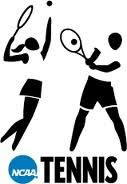
Playing collegiate tennis is the dream of most junior tennis players in the United States and all over the world. The process of finding a school and a tennis program that is the best fit for an individual may be a confusing process, not only for the player but for the parents as well. I remember my collegiate hunt back in Zimbabwe was a long and grueling process. Recently, I have had the opportunity to work with a few talented junior players, and when I ask them what their collegiate prospects are, most of them, and their parents, do not know how the process works. The best time to start the process would be the beginning of your junior year of high school.
Here are a few pointers that will hopefully help in the college hunt.
1. First, figure out what you want to study and then do some research on schools that provide the area of interest.
2. Figure out what region you would like to go to, and make a preliminary list of schools that are located in that region. As a junior in Zimbabwe, I primarily looked for schools in the Midwest because I wanted to experience the different weather that the region offered. I had never seen snow and I wanted to be in an area that had four seasons since Zimbabwe did not have that.
3. Ask your local pro or coach about college tennis and what level of college tennis he or she thinks would best suit you. Most tennis professionals have played college tennis and may have information that can be very useful in the process. Also, in my experience in Zimbabwe, most of the coaches that I worked with were in some way in contact with college coaches or coached players that wound up as NCAA athletes and are therefore hooked up.
4. Figure out if you want to play Division 1, 2, or 3 tennis. One must keep in mind that Division 3 schools do not provide scholarships.
5. Once you have figured out where you would ideally want to play, improving your ranking or getting your ranking to the level that the coaches are looking for is vital, but one must understand that it takes time to improve it. Most college coaches use recruiting websites or ITF Juniors for international players as a guide to track prospective student athletes. Note the assumption is you already are a solid player whose chances of playing in college are good, but you have not competed in adequate sanctioned tournaments.
6. Make sure you create a résumé and player DVD that highlights your skills in the best way. I would also make sure to create a user profile on tennis recruiting websites.
7. Register with NCAA Clearinghouse in order for you to be able to play in the NCAA.
8. Contact college coaches and express your interest in their program and ask them about more information about the school.
9. Plan an unofficial visit or official visit with the school, coach and team.
10. Finally, decide on the school that best fits your academic needs while also satisfying your tennis ones as well.
The whole time this is happening, do not slouch on your game. There is a definite jump from high school tennis to college. Go to your local club and hit with the former college players, or of course if you're in downtown Chicago, visit www.tenniswithd.com.
Comments
Post a Comment